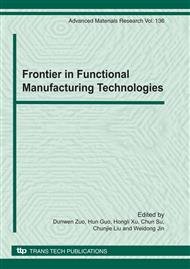p.43
p.48
p.53
p.59
p.64
p.69
p.77
p.82
p.86
Simulated Annealing Genetic Algorithm and its Application in Mixed-Model Assembly Line Design
Abstract:
Simple genetic algorithm has shortcomings of poor local search ability and premature convergence. To overcome these disadvantages, simulated annealing algorithm which has good local search ability was combined with genetic algorithm to form simulated annealing genetic algorithm. The tests by two commonly used test functions of Shaffer’s F6 and Rosenbrock show that simulated annealing genetic algorithm outperforms the simple genetic algorithm both in convergence rate and convergence quality. Finally, the simulated annealing genetic algorithm was firstly applied in a practical problem of balancing and sequencing design of mixed-model assembly line, once again, the solution results show that simulated annealing genetic algorithm outperforms the simple genetic algorithm. Meanwhile, it provides a new algorithm for solving the design problem of mixed-model assembly line.
Info:
Periodical:
Pages:
64-68
Citation:
Online since:
October 2010
Authors:
Price:
Сopyright:
© 2010 Trans Tech Publications Ltd. All Rights Reserved
Share:
Citation:


